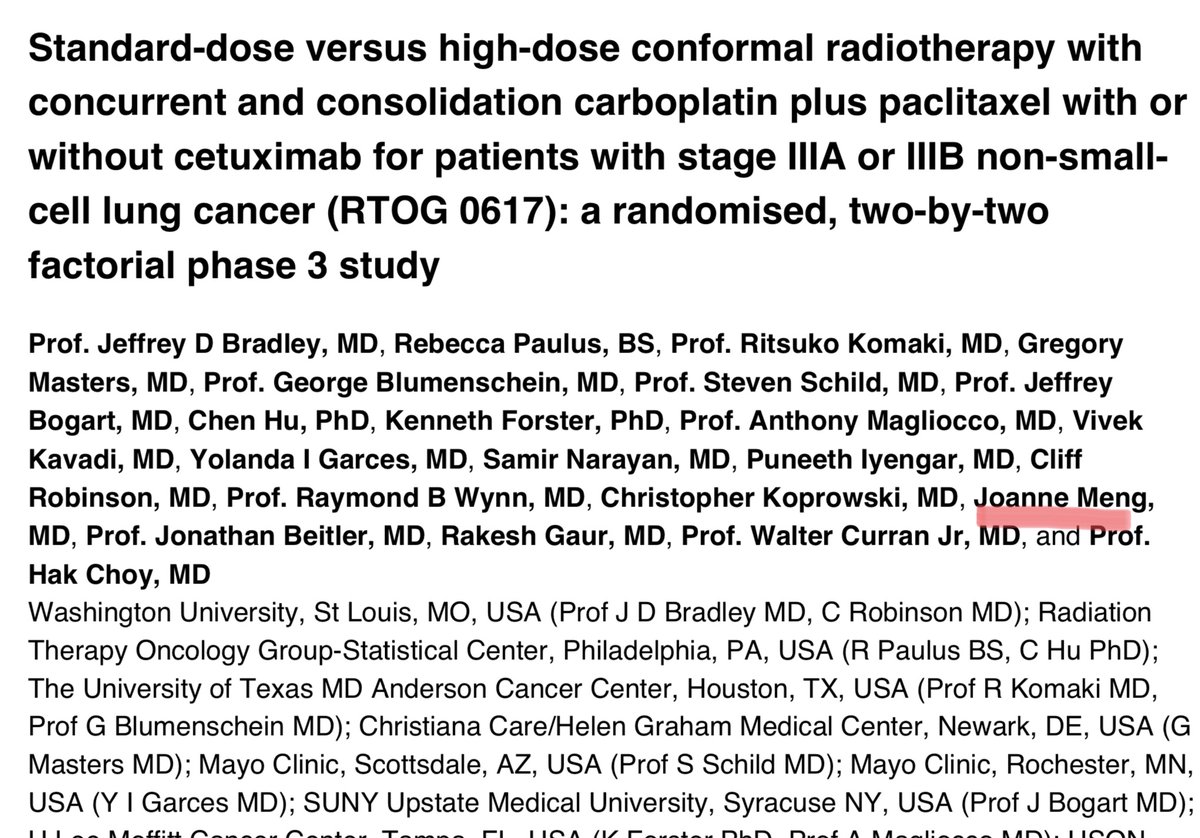
10 November: CONVERT and CIs
This year for Lung Cancer Awareness Month #LCAM I’m going to summarize 30 important lung cancer trials over 30 days. These posts are directed at non-medical professionals, with descriptions of the results and of what makes a good trial. #lcsm 1/15
This year for Lung Cancer Awareness Month #LCAM I’m going to summarize 30 important lung cancer trials over 30 days. These posts are directed at non-medical professionals, with descriptions of the results and of what makes a good trial. #lcsm 1/15

To date in these tweets I have loosely used the term “lung cancer” to refer to non-small cell lung cancer (NSCLC), by far the commonest type of lung cancer. Today we’ll look at a trial in small cell lung cancer. 2/15
Small cell cancer is characterized by rapid growth and early metastasis. Initially very chemo responsive, it is resistant to treatments at the time of recurrence. If restricted to one side of the chest (limited stage) it can be treated with chemoradiation with a chance of cure.
A 1999 trial in limited stage disease looked at two radiation schedules: 45 Gy given daily over 5 weeks or twice daily over three weeks, concurrent with chemotherapy. It showed that survival was slightly better with the twice-daily (bid) schedule. 4/15 

Due to concerns about toxicity and logistics of bid treatments, many centres gave once-daily treatments, often to a higher dose. This trial randomized people between these approaches; the two arms were 45 Gy, bid fractions over 3 weeks, or 66 Gy, daily fractions, over 6.5 weeks
The investigators chose to test the hypothesis that overall survival would be 12% higher at two years in the daily radiotherapy arm. By this standard the trial was negative: 2-year survival was 56% (95% CI 50%-62%) in the twice-daily arm, and 51% (95% CI 45%-57%) in the daily arm 

The authors’ interpretation was that the standard of care (twice-daily fractions) had not been overturned.
Despite that, many centres that had previously chosen once-daily fractions viewed the small difference between the arms as equivalence, and carried on as they had before.
Despite that, many centres that had previously chosen once-daily fractions viewed the small difference between the arms as equivalence, and carried on as they had before.
This may not be an appropriate interpretation. The authors take pains to note that the trial was not “powered for equivalence”. We will have to return another day to what it would mean to power a trial for equivalence. Before we do that we have to talk about confidence intervals.
A few tweets ago I wrote that one arm had 2-year survival of “51% (95% CI 45-57%)”.
Based on this trial, 51% is our best estimate of the 2-year survival in this arm, and 45%-57% is the 95% Confidence Interval, a range of other plausible values. 9/15
Based on this trial, 51% is our best estimate of the 2-year survival in this arm, and 45%-57% is the 95% Confidence Interval, a range of other plausible values. 9/15

We are interested in knowing not just the 2-year survival in this study, but inferring the 2-yr survival in the population of people with small cell in the world. If the trial were performed repeatedly, the true value in the population would be within the 95% CI, 95% of the time
This somewhat unwieldy interpretation of confidence intervals is actually familiar to you from hearing about polls around election time: “This poll is considered accurate plus or minus three points, nineteen times out of twenty (ie 95% of the time)” 11/15
The confidence interval gets narrower as the measurements get more precise. Practically in clinical trials, (or in election polls) this increase precision is achieved by enrolling more patients. 12/15
The 95% CI is also related to the concept of p<0.05. Any numbers within the confidence interval will not be statistically significantly different from each other (see Nov 2). 13/15
The authors give the difference between the 2 year survivals of the two arms as 5.3% (95% CI –3.2% to 13.7%). The fact that the 95% confidence interval includes a difference of zero means that the arms will not be significantly different at the p=0.05 level. 14/15
Tomorrow we'll revisit two topics that we've touched on before and put our new knowledge to use. It's another trial of chemotherapy for metastatic NSCLC, and a look at a controversial subgroup analysis (See Nov 3) 15/15 

Would love to hear any comment or recollections of this trial from @finn_corinne
• • •
Missing some Tweet in this thread? You can try to
force a refresh










